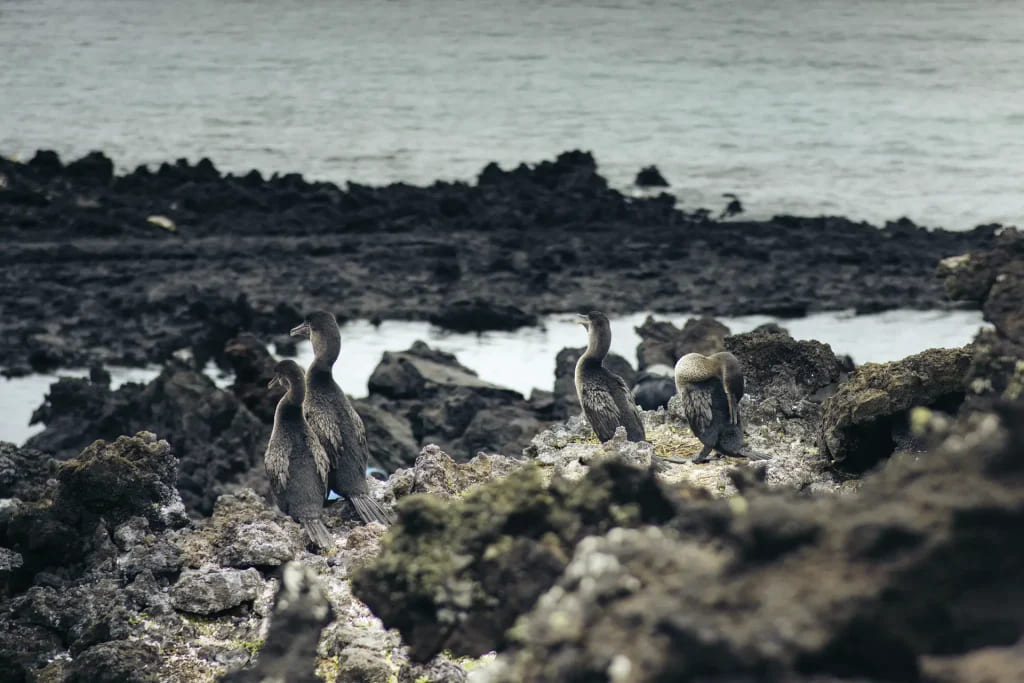One of the most remarkable yet seldom spotted seabirds in the Galápagos Archipelago is the flightless cormorant (Phalacrocorax harrisi). This unique, endemic species is only found along the coasts of Fernandina and Isabela Islands. These large seabirds are adept divers, catching their prey by diving underwater and using their feet and wing-like appendages to propel themselves. Their wings are so adapted for underwater propulsion that they have become more like small fins, rendering them incapable of flying. Consequently, they are the only flightless species among the approximately 40 cormorant species worldwide.
Adaptation
The flightlessness of these cormorants is an adaptation to the Galápagos environment, where they face no natural predators and have abundant food resources, allowing them to thrive without the need for flight. Instead of flying, they excel at diving and primarily consume coastal fish, octopuses, squids, and eels. They are quite active and are often seen socializing on coastal rocks, where they rest and dry off after their underwater hunts.
Reproductive Dynamics and Parental Behavior
The nesting period for P. harrisi typically takes place during the cooler months from July to October, a time when marine food sources are plentiful. The female generally lays three eggs per clutch, but usually, only one chick survives. Both parents share the responsibilities of incubating the eggs and caring for the chicks. Once the chicks become more self-sufficient, the female leaves to find a new mate, while the male continues to look after the remaining chicks. Females may breed up to three times a year.

Conservation Status and Survival Challenges
As of the latest count by the Galápagos National Park Directorate in 2022, there were approximately 2,085 flightless cormorants. This species is considered vulnerable due to potential threats from predators like snakes, owls, hawks, rats, cats, and sharks. The average lifespan of these cormorants is around 13 years, though some may live longer under less threatening conditions.
At Galápagos Conservancy, we recognize the significance of protecting seabirds, including the iconic Galápagos flightless cormorant. Their presence is a vital indicator of ocean health. Monitoring their population dynamics offers valuable insights into how marine environments respond to environmental and human impacts, emphasizing the importance of flightless cormorants in marine ecosystem conservation. Despite their small numbers, flightless cormorants are crucial indicators of the health of the Galápagos marine environment. Protecting these distinctive birds is essential for maintaining their coastal habitats and supporting broader conservation efforts, ultimately contributing to the resilience of the Galápagos Archipelago's extraordinary biodiversity.
